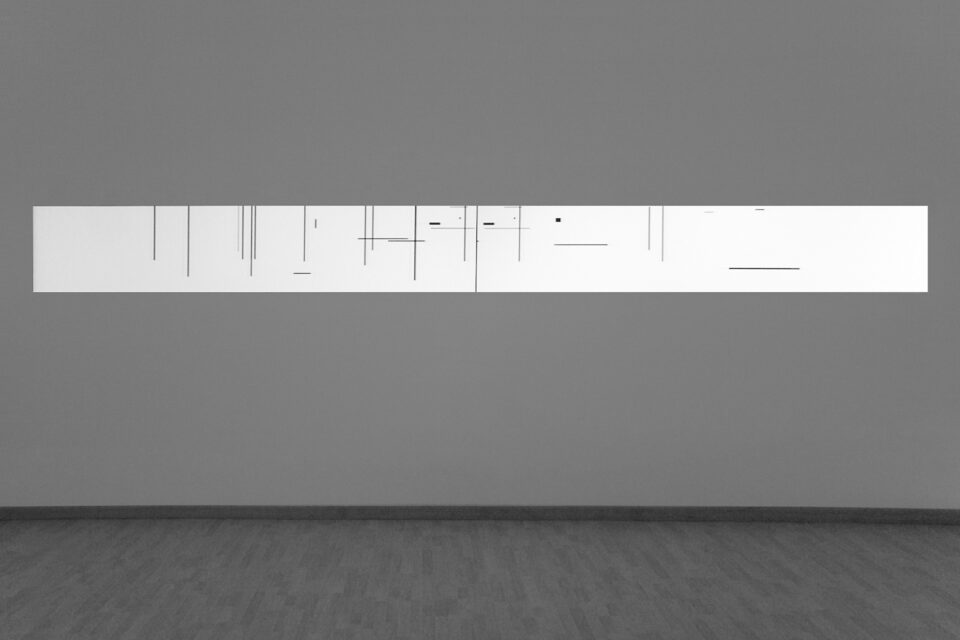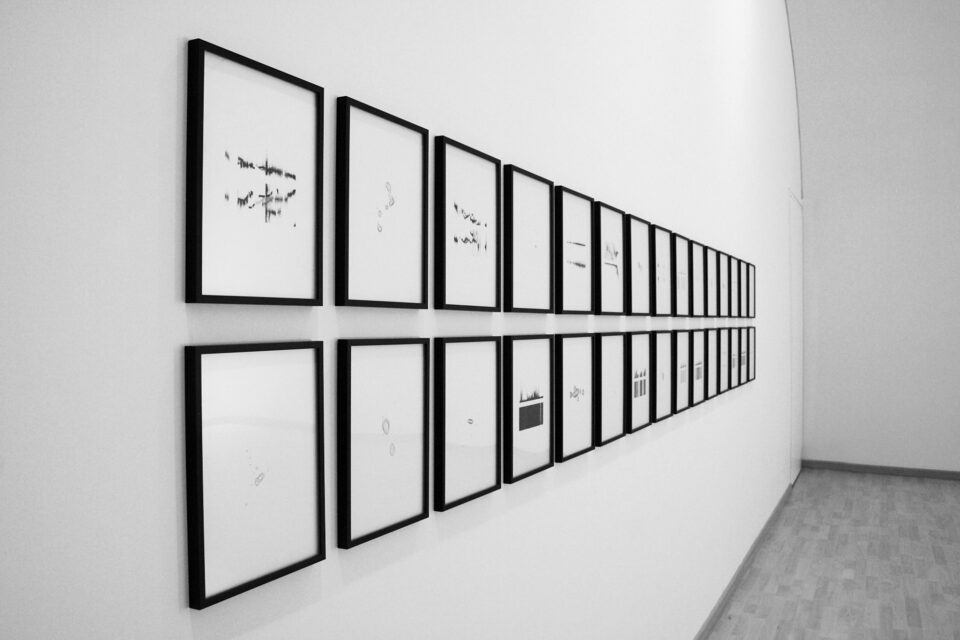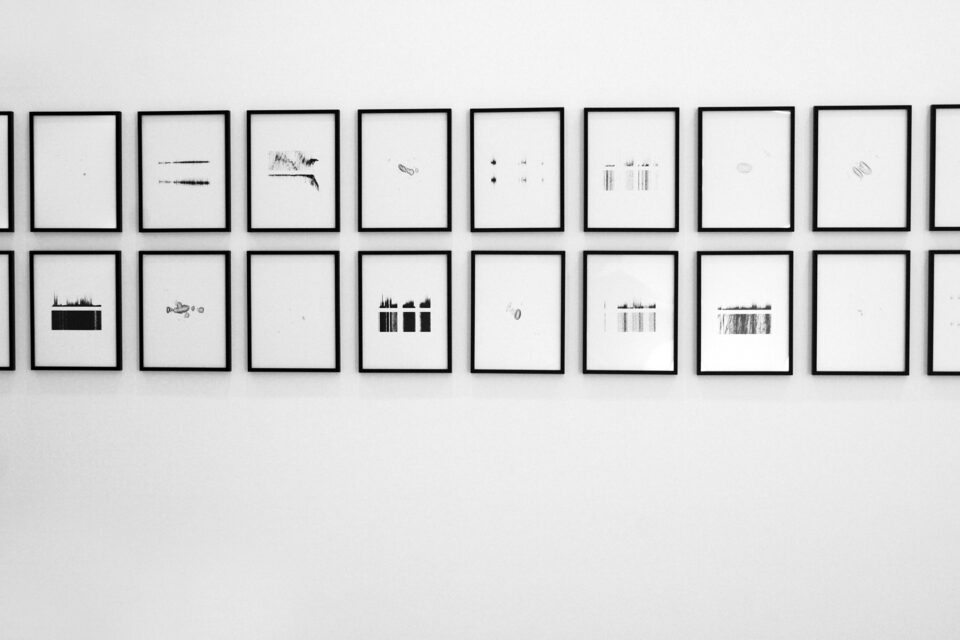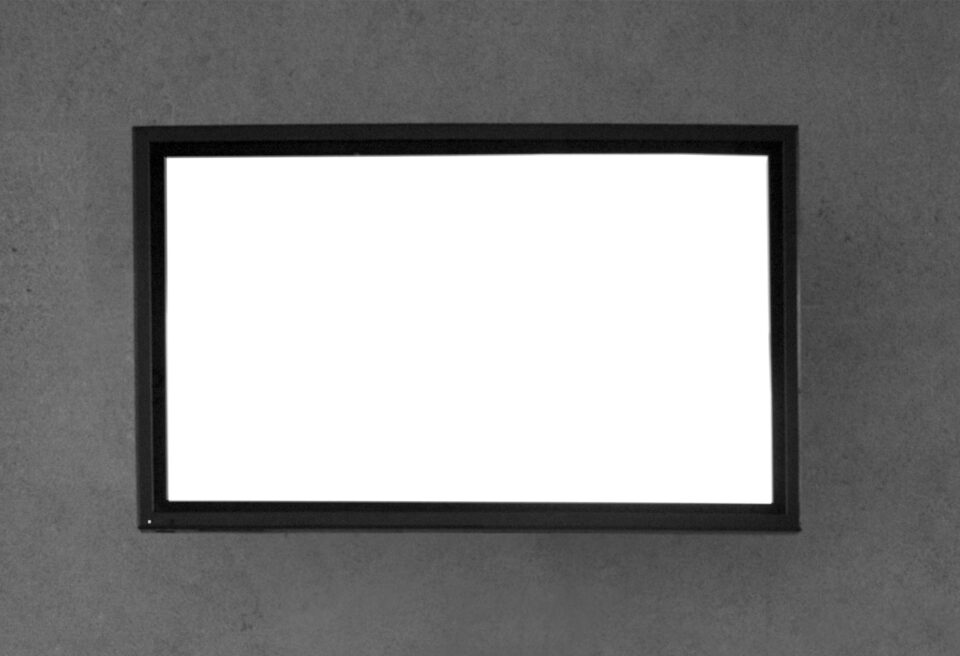Dislocaciones
For his inaugural solo exhibition in Colombia, Andrés Ramírez Gaviria presents three works—’Composition,’ ‘.-/,’ and ‘Sources’—delving into the nuances between interpretation and representation. Intertwining art history with the expressive capabilities inherent in science and technology, Gaviria amalgamates models of translation, coding, and representation from these fields, blending them with an acute awareness of their abstraction processes.
Composition, the central piece of the exhibition, epitomizes Andrés Ramírez Gaviria’s artistic process. It initiates a generative interaction among the horizontal and vertical lines extracted from Piet Mondrian’s renowned Transatlantic Paintings. As these lines undergo a progressive movement, their original order dissolves, giving birth to an unpredictable sequence of audiovisual patterns. Through the decontextualization and remixing of this iconic reference from modernity, Composition indirectly challenges historically established principles, where notions of order and disorder typically confront each other directly. This piece engenders an unstoppable fragmentation and restructuring of the same material, implying a variable dynamic of contextual circumstances and, consequently, everything produced within it. Rather than embracing clarity, the work suggests a preference for ambiguity and unpredictability. Composition moves from modernism towards informationism. By employing tactics of retrieval, storage, translation, mixing, and random search, the work shifts from the idea of art and beauty rooted in terms of purity towards constant flows of information.
In Sources the artist presents images of quasars, which are the most distant and brightest sources of light in the known universe. Due to the vast distance between these astronomical objects and Earth, it is impossible to depict their real appearance. With the aid of radio telescopes, these objects are registered and then translated into various optical forms. Despite the precision of the readings, these forms remain graphic interpretations of the original subjects.
The last piece, ./, is a six-minute video utilizing Morse code to visualize and sonorize the index from the book ‘Point and Line to Plane,’ authored by the Russian artist Vassily Kandinsky in 1926. While the video may appear as electronic interference on the screen, the content translating that movement represents a carefully constructed series of audiovisual sequences that operate within the realms of aesthetics and communication simultaneously.
Credits
Astronomers Zsolt Paragi (Joint Institute for VLBI in Europe), Sandor Frey (FOMI Satellite Geodetic Observatory), Leonid Gurvits (Joint Institute for VLBI in Europe), Roderiek Overzier (Max Planck Institute for Astrophysics, Garching, Germany), and Marcello Giroletti (INAF, Bologna, Italy) supported the development of Sources.





